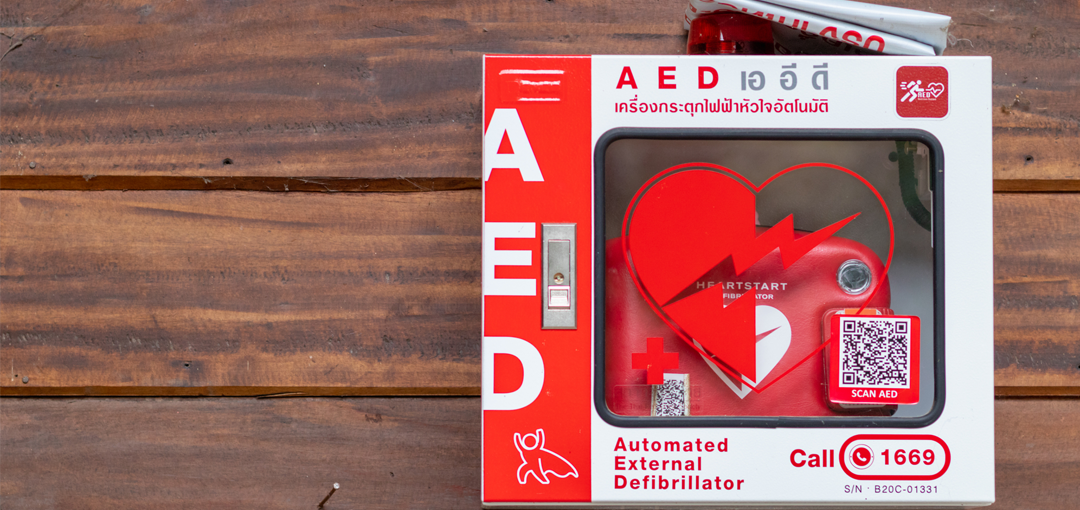AED In The Workplace: 5 Reasons Why It Matters
AED In The Workplace: 5 Reasons Why It Matters
November 8, 2023 |
The modern workplace is more than just a space to accomplish tasks; it’s a community where employees spend a significant portion of their lives. As such, ensuring the safety and well-being of everyone in this environment is paramount. One crucial aspect of workplace safety that is often overlooked is the presence of an Automated External Defibrillator or AED. AED in the workplace is more than just equipment; it’s a potential life-saver in moments where every second counts. But why exactly is having an AED in the workplace so critical? Let’s find out!
Sudden Cardiac Arrest Statistics
Every year, thousands of individuals experience sudden cardiac arrest. It’s a daunting medical emergency where the heart suddenly stops beating, halting blood flow to vital organs. The statistics are alarming: many victims of sudden cardiac arrest experience it outside of a hospital, with a significant portion occurring at the workplace. In these critical moments, the chances of survival decrease with every passing minute. Given the prevalence and severity of such incidents, it’s evident that workplaces need to be equipped to respond effectively.
Importance Of Quick Response Time
Time is of the essence when someone experiences sudden cardiac arrest. With each passing minute, the probability of survival diminishes significantly. Brain damage can begin to set in just a few minutes after the heart stops, and irreversible damage or death can occur within 8-10 minutes. In many workplace settings, waiting for emergency medical services to arrive can take longer than this critical window. Thus, the presence of an AED and trained individuals can bridge this time gap, providing immediate, life-saving intervention while awaiting professional medical assistance.
How AEDs Save Lives
AEDs are designed to deliver an electric shock to the heart, aiming to restore a regular heartbeat. When someone goes into sudden cardiac arrest, their heart often flutters uncontrolled, a condition known as ventricular fibrillation. An AED detects this irregular heart rhythm and, if appropriate, advises a shock. This shock can jolt the heart back into its normal rhythm, saving a life. What makes AEDs particularly valuable in the workplace is their user-friendliness. Even individuals without medical training, when properly instructed, can operate these devices. AEDs in the workplace turn ordinary employees into extraordinary heroes by delivering a timely shock, providing a fighting chance against the grim statistics of sudden cardiac arrest.
Legal And Regulatory Requirements
Adhering to legal standards isn’t just about compliance; it’s about emphasizing the value placed on human life. Many regions and countries have introduced legislation requiring certain establishments, especially those with a high footfall or specific risk factors, to have AEDs available. These laws stem from understanding how vital rapid response is during cardiac emergencies. In addition to legal mandates, there might also be industry-specific guidelines that companies need to follow. Non-compliance could result in penalties or legal action and, more crucially, in the potential loss of a life that could have been saved. By ensuring that AEDs are present and employees are trained to use them, companies reinforce their commitment to legal obligations and the broader duty of care they owe to their employees and visitors.
Employee Well-Being And Morale
Beyond the tangible benefits of having an AED in terms of saving lives and adhering to regulations, there’s an intangible but equally important factor to consider: the peace of mind it brings. Knowing that the workplace is equipped to handle cardiac emergencies can significantly boost employee morale. It conveys that the organization cares about its people, investing in tools and training to safeguard their lives. Moreover, employees trained to use the AED gain confidence, knowing they have the skills to make a difference in a critical situation. This proactive approach to safety can foster a positive work culture, enhancing the sense of community and mutual care. In an era where employee well-being is becoming a focal point, having an AED in the workplace is not just a safety measure but a testament to the value an organization places on each individual within its walls.
